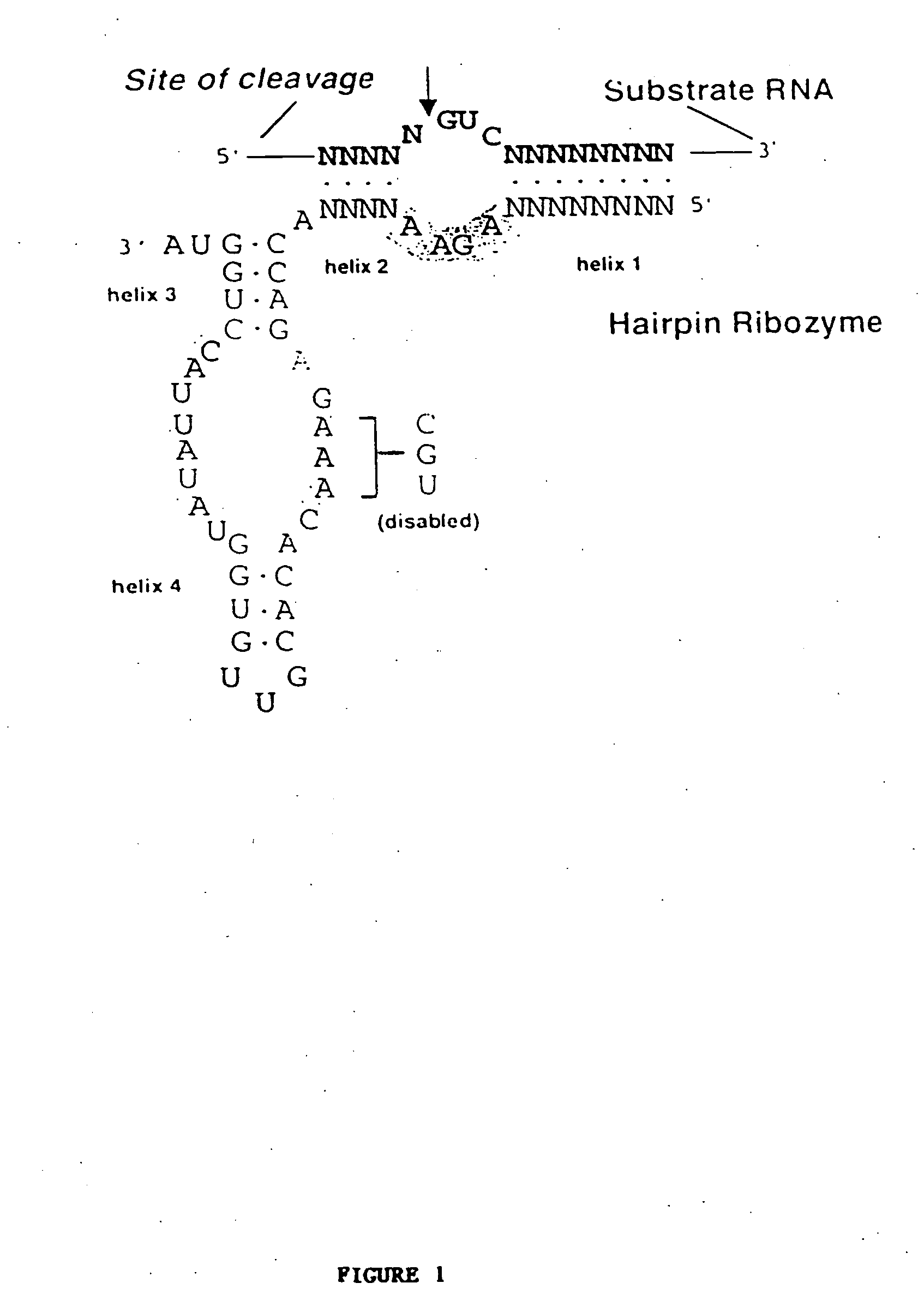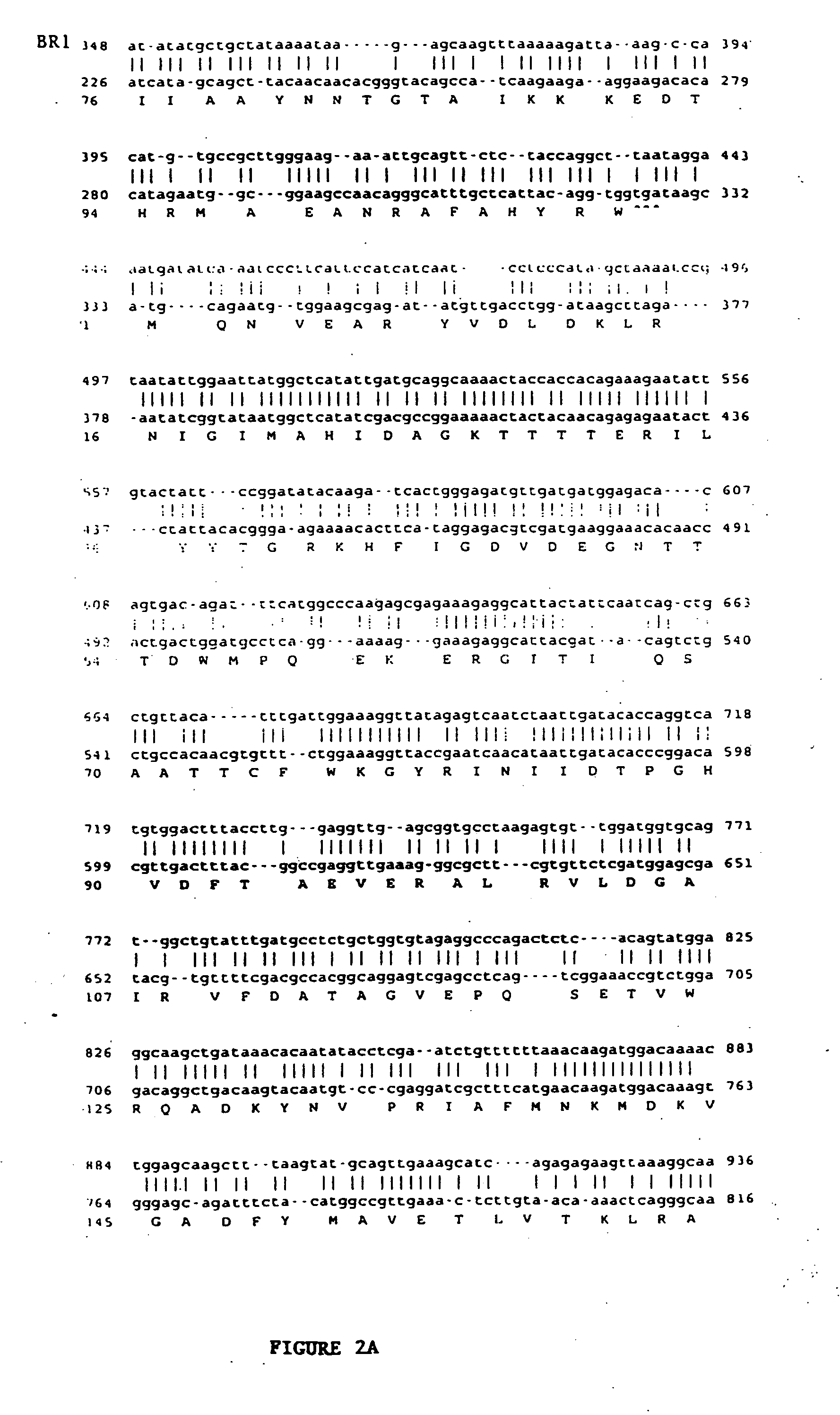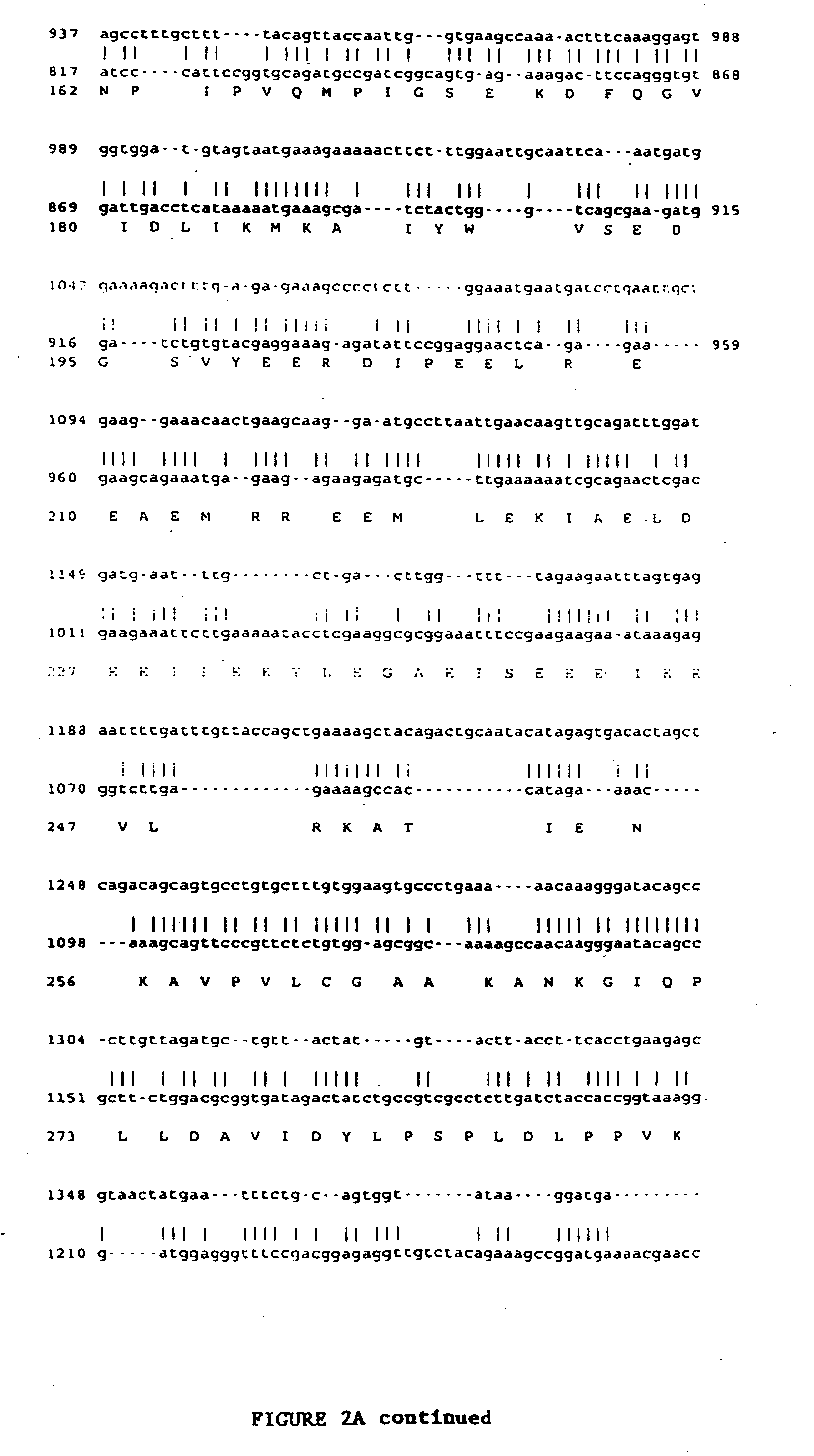Brca-1 regulators and methods of use
a tumor suppressor and regulator technology, applied in biochemistry apparatus and processes, instruments, transistors, etc., can solve the problems of cell escape from normal growth regulation mechanisms and proliferate in an uncontrolled fashion, and achieve the effect of increasing the propensity for cancer, upregulating or downregulating brca-1
- Summary
- Abstract
- Description
- Claims
- Application Information
AI Technical Summary
Benefits of technology
Problems solved by technology
Method used
Image
Examples
example i
Preparation of the Random Retroviral Vector Ribozyme Library
[0167] This example demonstrates the construction of a random retroviral vector ribozyme gene library. The inventors have discovered that by introducing a random retroviral vector ribozyme gene library in the PA1 ovarian carcinoma cell line, certain of the ribozymes will selectively target and inactivate mRNA molecules encoding regulators of the BRCA-1 tumor suppressor gene. A ribozyme gene library with randomized target recognition sequences was introduced into mammalian cells stably expressing a selectable marker, enhanced green fluorescent protein (EGFP) under the control of the BRCA-1 promoter. Cells in which BRCA-1 expression was upregulated by particular ribozymes were selected through their concomitant increase in EGFP expression. The ribozyme genes were then rescued from the cells with enhanced EGFP expression and sequenced across their substrate binding sites. The corresponding ribozyme binding sequence, or “targ...
example ii
Isolation of Ribozymes that Target BRCA-1 Regulator Nucleic Acids
[0178] This example demonstrates the isolation of ribozyme genes that bind to and inactivate BRCA-1 regulator nucleic acid molecules, and the identification of the nucleic acid sequences they target.
[0179] A reporter gene based cellular selection system was used in order to facilitate functional selection for cells with a change in their BRCA-1 expression. The reporter construct allowed expression of EGFP under control of the BRCA-1 promoter region contained in a 2.9 kb fragment from the BRCA-1 genomic sequence. The 2.9 kb BRCA-1 promoter region was amplified using a primer with an added PstI site (5′-ATCTTTCTGCAGCTGCTGGCCCGG-3′; SEQ ID NO: 52) and an AgeI containing primer (5′-GTGTAAACCGGTAACGCGAAGAGCAGATA-3′; SEQ ID NO: 53) and the PCR Long Template System (Boehringher Mannheim) from a pGL2 vector containing a 3.8 kb genomic BRCA-1 fragment. The PCR product was gel purified, digested with PstI and AgeI and cloned ...
example iii
Isolation and Characterization of Breast Basic Conserved Protein 1 (BBC1)
[0192] This example demonstrates the isolation of a full-length transcriptional regulator of BRCA-1 nucleic acid molecule designated Breast Basic Conserved Protein 1 cDNA and its encoded polypeptide.
[0193] Since ribozymes recognize their cognate targets by sequence complementarity, the sequence of a ribozyme that causes a phenotype through its catalytic activity predicts a sequence tag that can be used to clone the target gene. This “Target Sequence Tag” or TST is about 16 bases long, consisting of the two target regions complementary to ribozyme helices 1 and 2 and the requisite GUC (see, for example FIGS. 1, 2 and 7). The TST can thus be used to BLAST search the gene and EST databases, and also can be used as a primer for 3′ and 5′ RACE. BLAST searches of the databases with the TST corresponding to RH1 yielded no complete matches, and incomplete matches only with non-human sequences.
[0194] In light of the...
PUM
| Property | Measurement | Unit |
|---|---|---|
| temperature | aaaaa | aaaaa |
| total volume | aaaaa | aaaaa |
| total volume | aaaaa | aaaaa |
Abstract
Description
Claims
Application Information
 Login to View More
Login to View More - R&D
- Intellectual Property
- Life Sciences
- Materials
- Tech Scout
- Unparalleled Data Quality
- Higher Quality Content
- 60% Fewer Hallucinations
Browse by: Latest US Patents, China's latest patents, Technical Efficacy Thesaurus, Application Domain, Technology Topic, Popular Technical Reports.
© 2025 PatSnap. All rights reserved.Legal|Privacy policy|Modern Slavery Act Transparency Statement|Sitemap|About US| Contact US: help@patsnap.com



